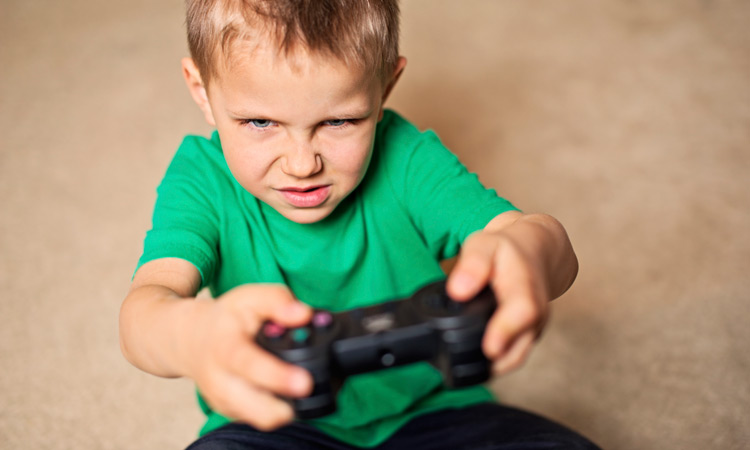
When video games first came out, I embraced them with great fervor. But yesterday’s fervor would be today’s torpor. The dots of light crawling across a dark screen that got my adrenaline pumping would be a virtual sedative to players of hyper-real games in the 21st century.
The most violent on-screen action back then was zapping a cartoon rocket with a face on it in games like Space Invaders. No blood, no screams of terror, and nothing even remotely realistic. The biggest concerns our parents had about us playing too much were eyestrain and not spending enough time on homework.
Now let’s consider Call of Duty: Modern Warfare 3, a popular game today that envisions World War III in a very disturbing future. This is one of the common “first-person shooter” games, which means that players experience the action through their own perspective—as if they’re in the arena of action firing weapons at enemies.
Here’s a typical scenario. You capture a bunch of enemy soldiers, then gun them down. As your shots rain on them, blood erupts like lava from their ravaged bodies so realistically that you’re tempted to duck to avoid getting sprayed.
Just the thought of this makes me feel a little sick. But today’s youth seem immune to such feelings. Watch their faces as they annihilate victim after victim for hours on end in this digital war zone and you may see nothing more than blank stares. But you may wonder what goes on behind those poker faces.
Did video games turn Adam Lanza into an assassin?
The possible link between playing violent video games and committing real-life acts of horror drew a lot of attention when it was revealed that Adam Lanza—whose homicidal rampage in 2012 left 26 people dead in Newtown, Connecticut—was a big fan of Call of Duty. There have also been other cases of real-life killers who had a steady diet of games featuring extreme violence.
But which came first: the violent behavior or the playing of violent video games? It seems likely that someone with an existing propensity for violence would enjoy games featuring hard-core aggression. Also, if video games are a prime inciter of real-life violence, our society should be overrun by it. More than 90% of kids and 58% of all Americans today play video games, and 90% of the most popular games involve violence.
Trying to scientifically confirm a link between video game violence and the real-life version presents a major challenge. A thorough investigation would need to encompass thousands of people of all ages, and rule out confounding variables related to frequency of usage, age, socioeconomic background, and so on. Players would have to be followed for years to monitor how often they play and to rule out other causative factors (such as suffering abuse as a child).
Since such studies are wildly impractical—not to mention unethical—researchers have attempted to investigate the link in more constrained studies. One example: asking students to play violent games, then looking at changes in their behavior based on laboratory measures of aggression. One such study, for example, asked the participants to complete the word explo___ . after playing a video game, to see whether the game would make them more likely to fill in the word as “explode” rather than “explore.”
Some extensive research has shown that violent video games might indeed be a trigger in susceptible players. “We did a comprehensive review of every experimental study, reviewing 381 effects from studies involving 130,000 people, and results show that playing violent video games increases aggressive thoughts, angry feelings, and physiological arousal,” noted Brad Bushman, Ph.D., a psychologist at Ohio State University. According to Bushman, video games may “amplify” violent behavior but are unlikely to be the sole cause of such aggression.
Brain imaging shows “desensitizing” effect
Imaging of brain activity in players before, during, and after each violent video game encounter has been revealing. Right before players fired their weapons in one study, investigators found greater activity in the dorsal anterior cingulate cortex—an area of the brain involved in cognitive control and planning, as well as other functions. As the players fired, they had less activity in the rostral anterior cingulate cortex and amygdala—an important finding, because interaction between these brain areas is associated with the resolution of emotional conflict. This change in activity might indicate the blocking of an emotional response (such as remorse) to the violent events, which might make it more “acceptable” to act in a violent fashion.
This desensitizing effect has been exploited in military training, where video games involving violent activity are used to break down the natural resistance to killing (a liability in battle). This is disturbing, but it makes sense from a strategic perspective during wartime. What remains unclear is whether a greater willingness to engage in violence in one setting may transfer to other settings where violence is unacceptable.
The general feeling appears to be that violent video games present a risk, as demonstrated by a survey of 371 media psychologists and communication scientists from three different organizations, 268 parents from across the United States, and 92 members of the Council on Communication and Media from the American Academy of Pediatrics. In this diverse group, 66% of researchers, 67% of parents, and 90% of pediatricians felt that these games increase aggressive behavior in children.
Clearly, more study of the possible link between violent video games and aggressive behavior is warranted. In any case, limiting such game playing seems like a good idea.
Click here to get inspired by Rose’s easy steps to positively change your mind




1 Comment
Kenny
I honestly wouldn’t even allow my kids to come close to those such violence… I think parents failed if they allow their kids to play video games – let alone violent ones… I don’t think it will necessarily lead to violence but can we please go back to letting kids play outside?